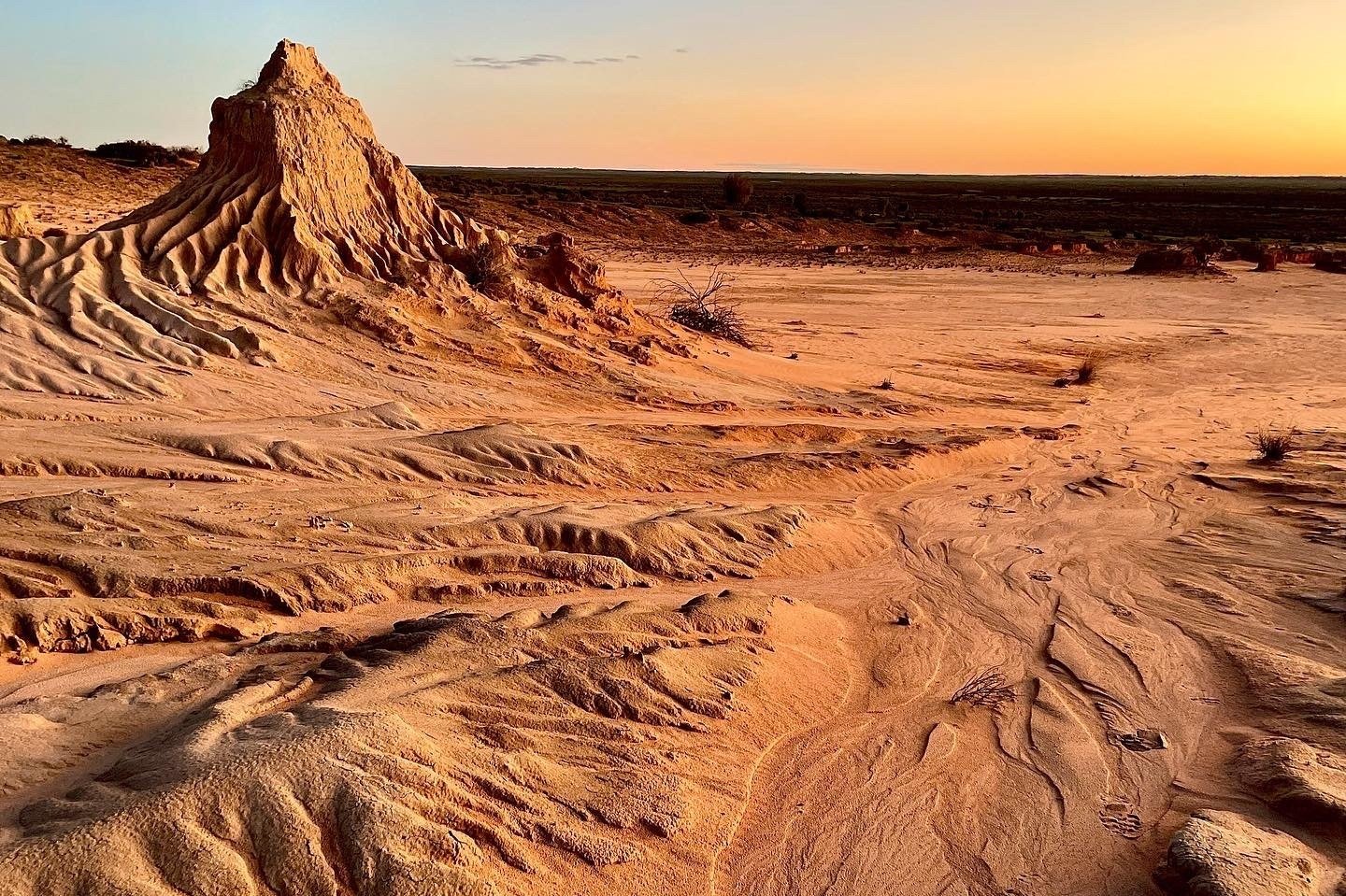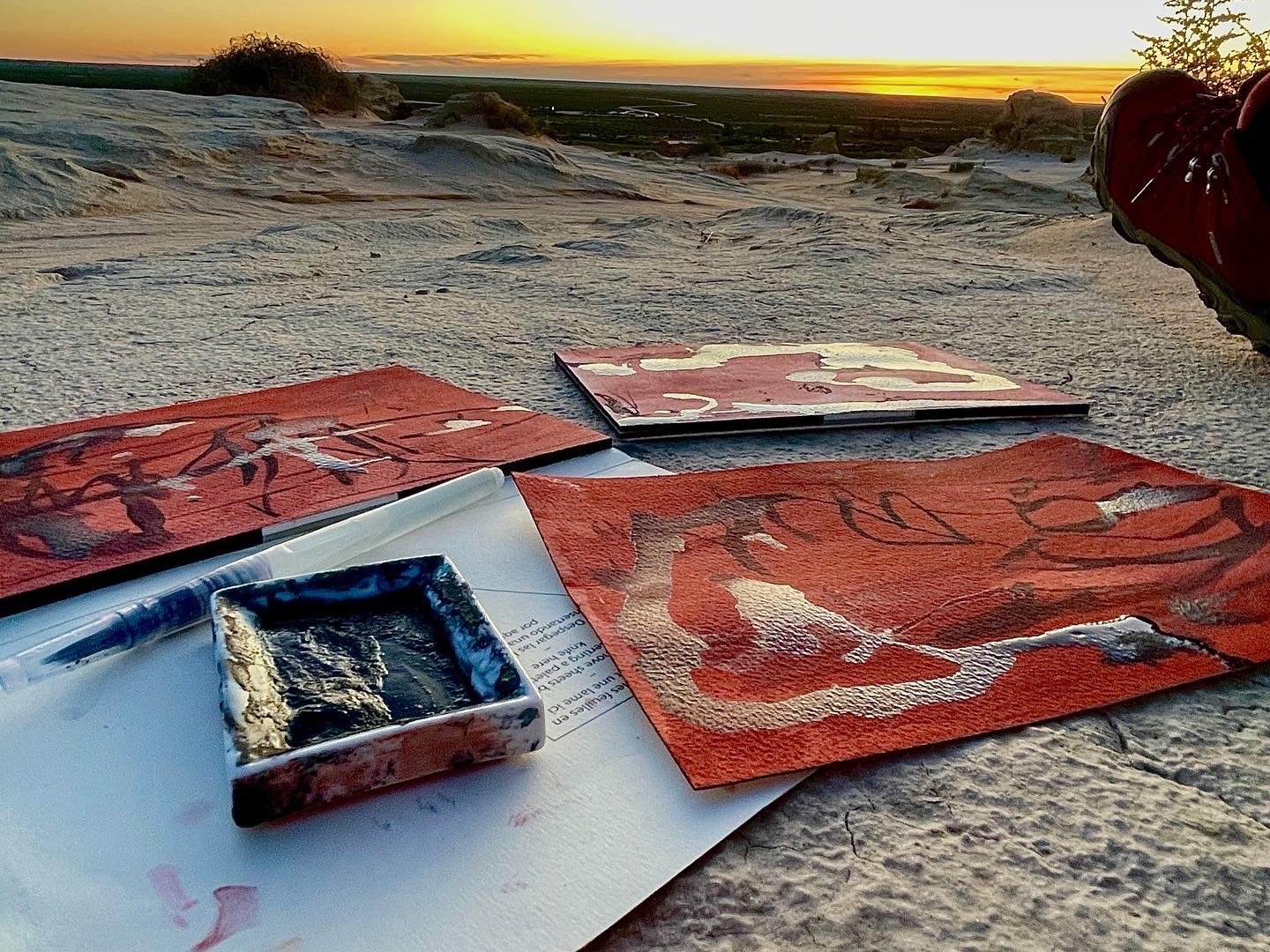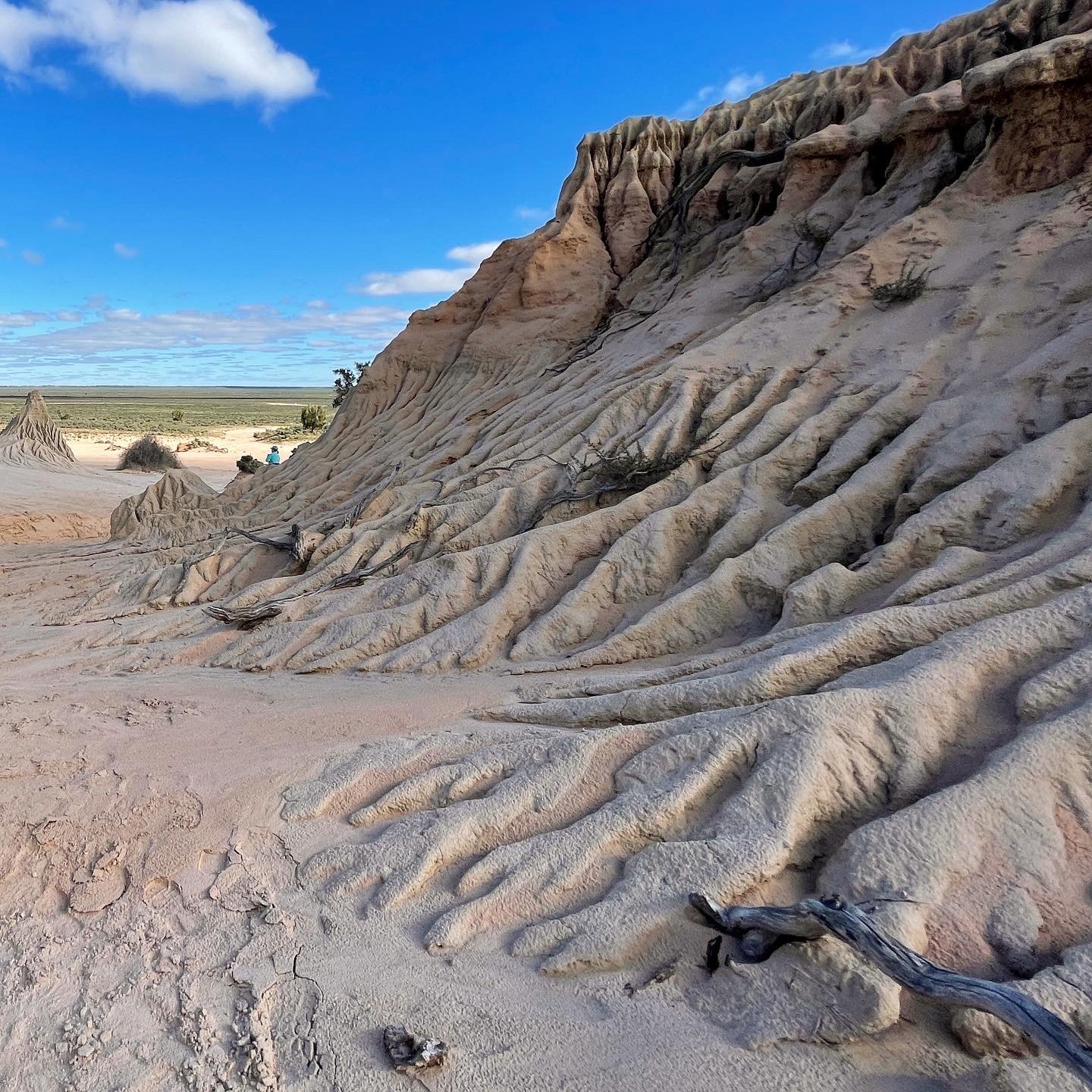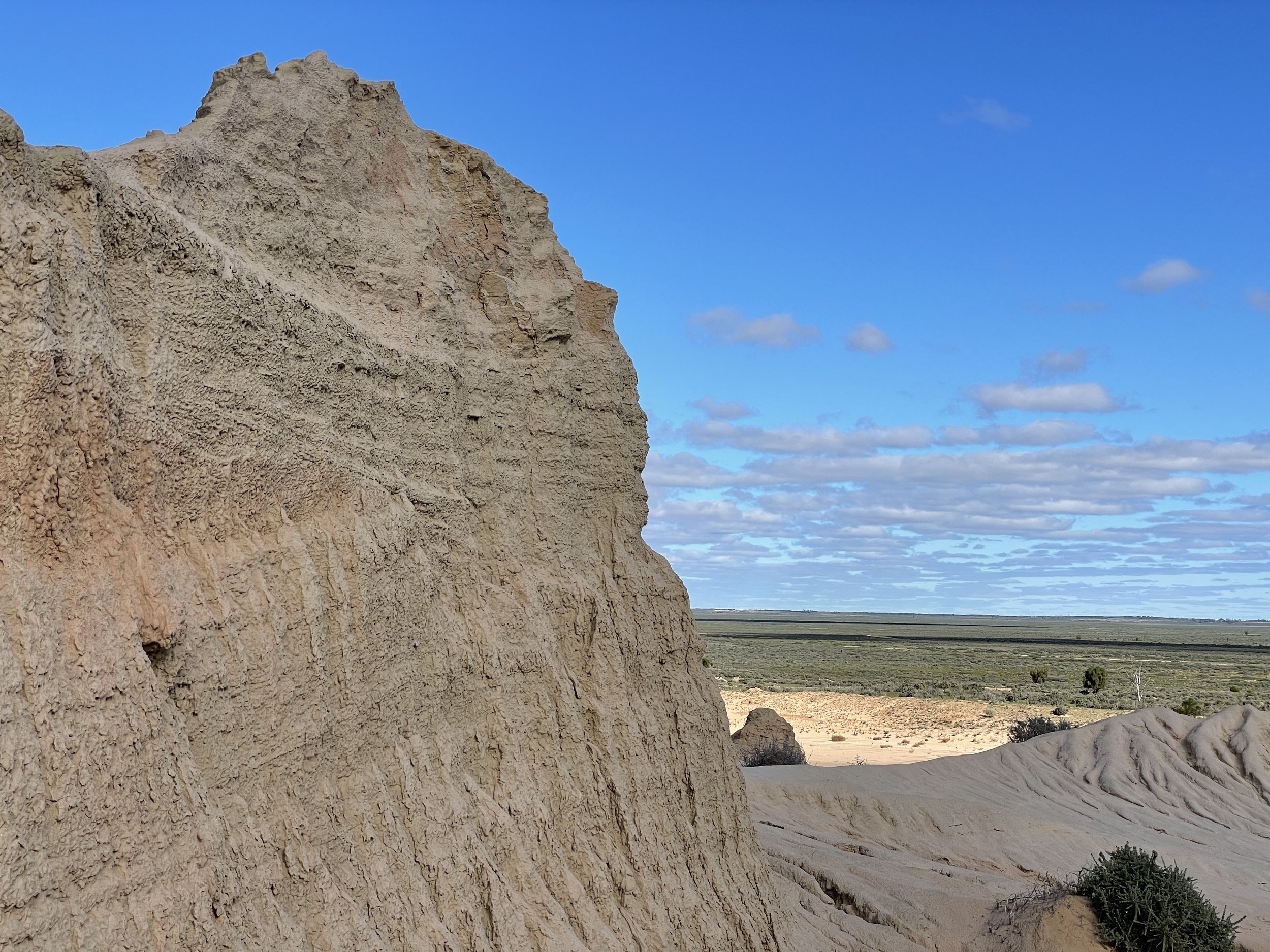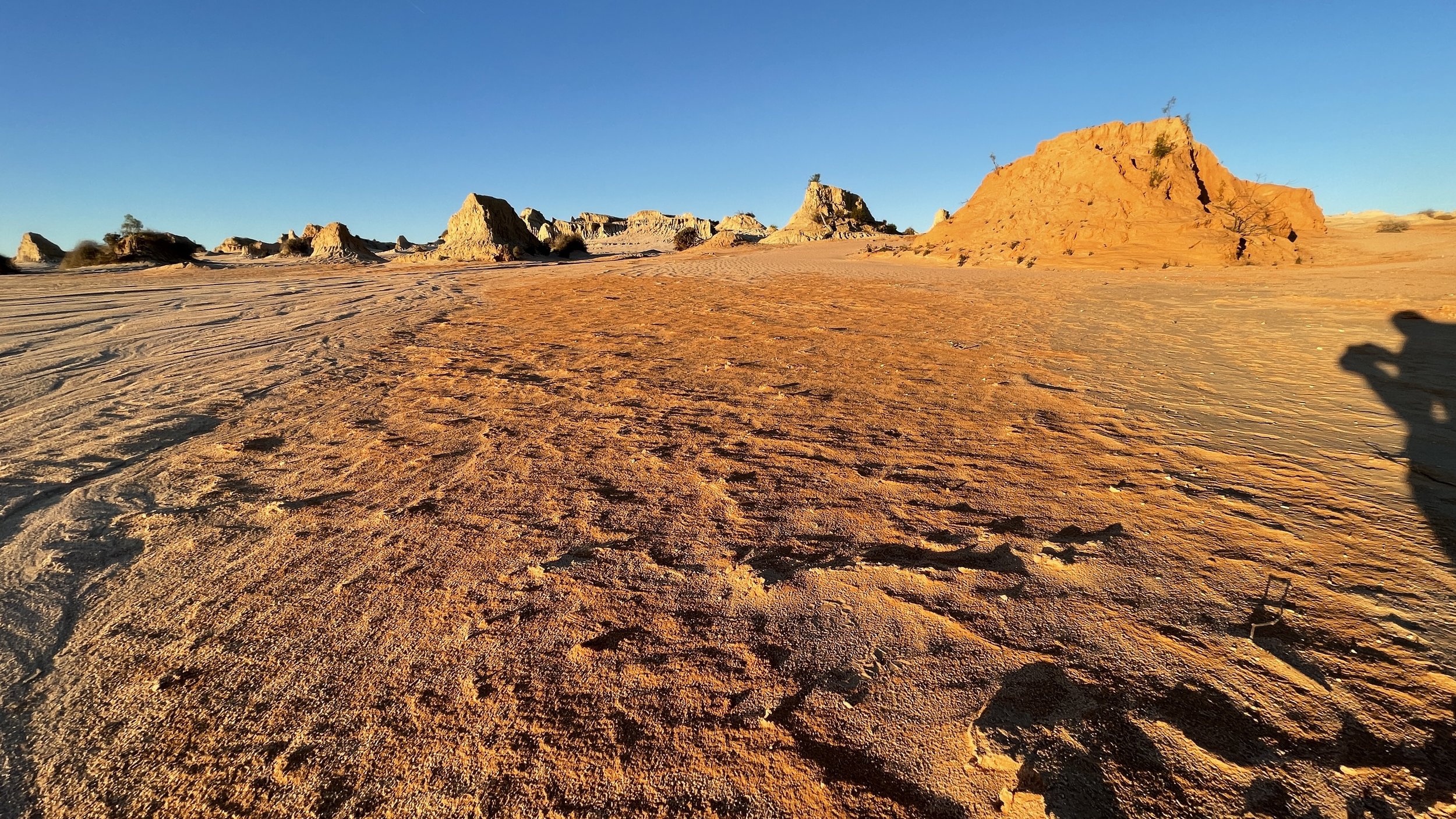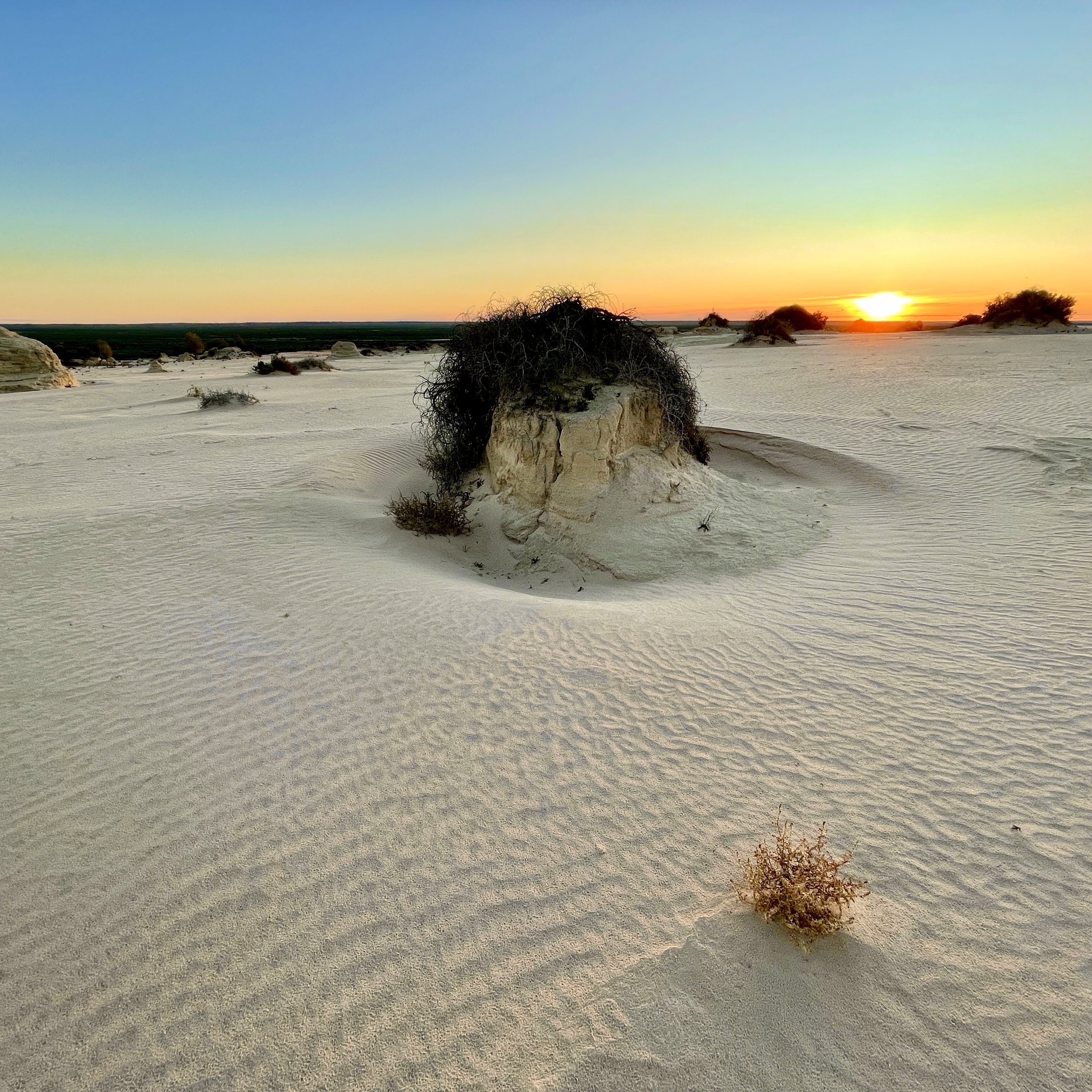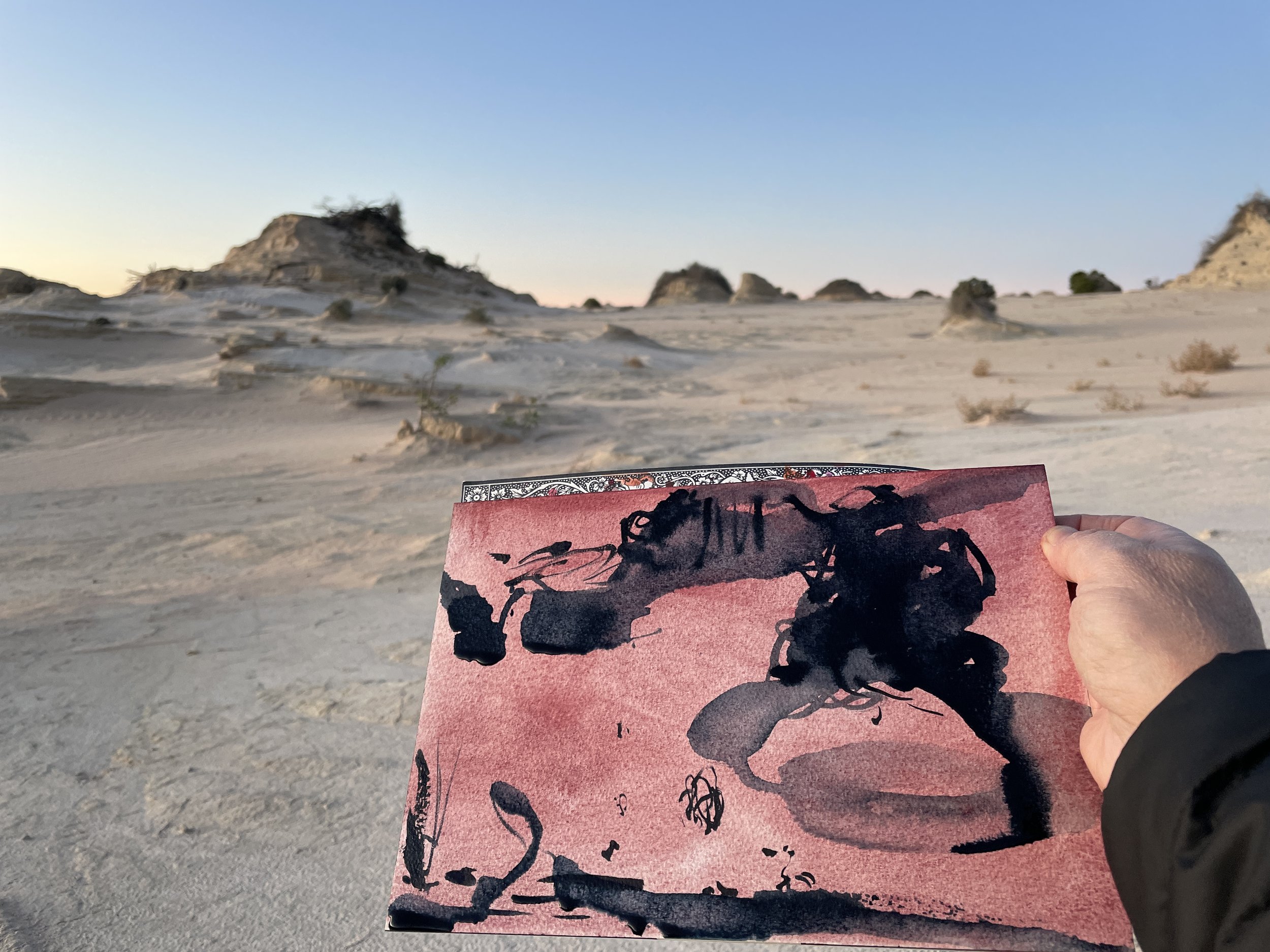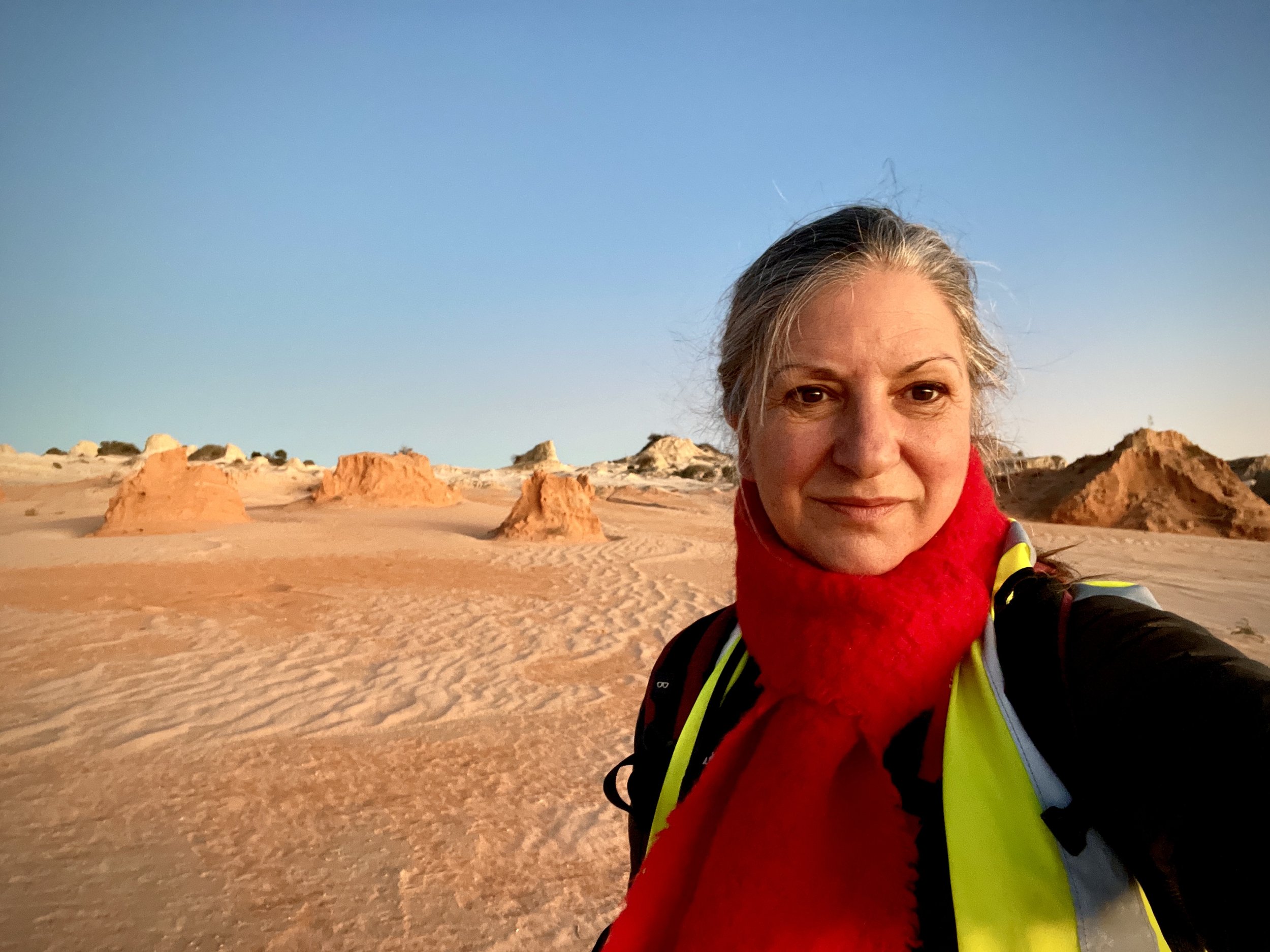When I first arrived at Mungo I was determined to explore every colour that Winsor & Newton had developed in its watercolour range. I carried them all out with hand-coloured sample charts. I hoped to find the truth between the place I could see and my artists' palette of commercially produced colour pigments- artists’ colours.
It's been a long pursuit to come to know a place and its colour, and I'm only concentrating on red pigments.
It is a specific colour interest that led me to Mungo. I heard the story of Mungo Woman and Mungo Man. Mungo Woman had revealed herself in 1968 – the year I was born – the traditional owners of this land believe there is a reason for her revealing herself. Her stories needed to be told, and questions to be asked. Her presence is in this place. Mungo Man, however, intrigued me for a different reason. His cremated body was laid in the earth very purposefully, with red ochre (not from this area) scattered across his body.
Why was this red ochre so significant to have been placed with this man? The red ochre is different from the red earth and dirt that seemed so intense in contrast to the outback's cool, vivid blue sky. The red ochre has an intensity that lives on its own, and that colour has a power and strength that remained for 45,000 years on mungo man.
These thoughts led me to question… what artists' colours in my paintbox would I use to capture that same intensity? Or what combination of colours?
It wasn't just about mixing bits and pieces. How could I construct a red with this colour's physical appearance and subtle characteristics and personality?
I also investigated the lunettes' pink landscape, leading to the Gol Gol Layer. This red layer of earth is deep dark red and represents a time that demarcates life. So long ago…so old is this layer… a platform for life…. It seeps through the layers of gypsum silica and silt from the ancient lakes. It creates soft, gentle pink streaks through the lunettes or, at times, deep rich red mounds that seem to poke through the vivid white canvas known as the Walls of China.
With all this considered, my task at Mungo was to investigate the palette that captures a place, and its geology, weather, and light. The living colour of the most unique place I've ever experienced.
